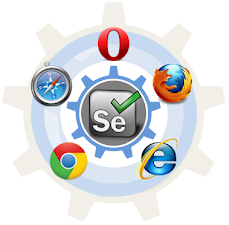The Comprehensive Guide to Website Testing: Ensuring Quality, Performance, and SEO Success
In today's digital-first world, your website is often the primary touchpoint between your business and your audience. It's more than just an online brochure; it's a critical tool for engagement, conversion, and brand building. Ensuring this tool functions flawlessly, delivers an exceptional user experience, and meets its strategic goals requires a rigorous and ongoing process: website testing.
This isn't merely a final quality check; it's an integral part of the entire website lifecycle, crucial for maintaining user satisfaction, protecting your reputation, optimizing performance, and significantly boosting your Search Engine Optimization (SEO) efforts in 2025. Let's delve into the key aspects, types, processes, and tools that constitute effective website testing.
Why is Website Testing Critically Important?
Testing might seem like an extra step, but its benefits are far-reaching and fundamental to online success:
- Enhance User Experience (UX): First impressions matter immensely online. Testing uncovers broken links, confusing navigation, slow load times, or inconsistent design elements that frustrate users and drive them away. A seamless, intuitive experience builds trust, encourages longer visits, and increases the likelihood of conversions.
- Ensure Flawless Functionality: Does your contact form actually submit? Can users complete a purchase? Functional testing verifies that every interactive element – from simple links to complex business workflows – operates correctly, preventing user roadblocks and ensuring the site fulfills its core purpose.
- Improve Performance & Speed: Website speed is paramount. Slow-loading pages lead to high bounce rates and user abandonment. Performance testing identifies bottlenecks, allowing you to optimize images, code, and server responses for faster load times and better responsiveness, especially crucial for Core Web Vitals (CWV), a key Google ranking factor.
- Guarantee Security & Build Trust: In an era of increasing cyber threats, security isn't optional. Testing identifies vulnerabilities like SQL injection or cross-site scripting (XSS) before malicious actors can exploit them, protecting sensitive user data, preventing costly breaches, and maintaining user trust – essential for reputation and compliance.
- Boost SEO Performance: Technical soundness directly impacts search rankings. Testing ensures search engine crawlers can easily access and index your site (crawlability/indexability), checks for mobile-friendliness (vital for mobile-first indexing), validates structured data, ensures HTTPS security, optimizes for speed (CWV), and fixes broken links – all critical SEO best practices that enhance visibility.
Deep Dive: Essential Types of Website Testing
Different testing types address specific aspects of website quality:
1. Functional Testing
- What it is: Validates that every feature and function of the website works according to specified requirements. It's about confirming the site does what it's supposed to do.
- Key areas: Links (internal, external, mailto, anchor – checking for broken links is crucial), Forms (data validation, submission success/failure, error message clarity), User Authentication (login/logout), Cookies (testing persistence and expiration), Business Workflows (e.g., e-commerce checkout process from start to finish), API Integrations.
- SEO Link: Prevents broken links (404 errors) that harm user experience and waste crawl budget. Ensures forms work, allowing lead generation or e-commerce conversions tracked as goals.
2. Usability Testing
- What it is: Evaluates the website's ease of use from an end-user perspective. It focuses on intuition, navigation clarity, and overall user satisfaction. Often involves observing real users interacting with the site.
- Key aspects: Navigation ease, Layout consistency and clarity, Readability of content, Clear and compelling Call-to-Actions (CTAs), Accessibility (WCAG compliance for users with disabilities), Information architecture logic, Feedback mechanisms.
- SEO Link: Directly improves user experience signals (lower bounce rate, higher dwell time, increased pages per session) that Google considers. Better accessibility broadens your audience reach.
3. Performance Testing
- What it is: Assesses the website's speed, responsiveness, stability, and scalability, especially under load (simulated high traffic).
- Tools: Google PageSpeed Insights, GTmetrix, WebPageTest, JMeter, LoadRunner.
- Key metrics: Page Load Time (LCP), Interaction Responsiveness (INP), Visual Stability (CLS) – the Core Web Vitals. Server Response Time (TTFB), Stress/Load handling capacity, Scalability assessment.
- SEO Link: Critically important for SEO. Directly impacts Core Web Vitals scores, which are ranking factors. Faster sites provide better UX, reducing bounce rates.
4. Compatibility Testing (Cross-Browser/Cross-Device)
- What it is: Ensures the website renders and functions consistently across different web browsers (Chrome, Firefox, Safari, Edge), browser versions, operating systems (Windows, macOS, iOS, Android), and devices (desktops, laptops, tablets, smartphones) with varying screen resolutions.
- Common tools: BrowserStack, Sauce Labs, LambdaTest, Chrome DevTools (Device Mode).
- SEO Link: Essential for Google's Mobile-First Indexing. Ensures a positive experience for all users, preventing ranking drops due to poor mobile performance or browser-specific bugs.
5. Security Testing
- What it is: Actively searches for security flaws and vulnerabilities to protect the website and its users from threats.
- Focus areas: Identifying risks like SQL Injection, Cross-Site Scripting (XSS), insecure authentication/session management, vulnerabilities in third-party components, ensuring proper implementation of HTTPS and secure handling of sensitive data.
- SEO Link: Prevents security warnings in search results or site blacklisting. Ensures HTTPS is correctly implemented (a minor ranking signal and trust factor). Protects site reputation.
6. Technical SEO Testing
- What it is: Specifically validates technical elements crucial for search engine crawling, indexing, and ranking.
- Key checks:
- Crawlability:
robots.txtanalysis, XML Sitemap validation/submission. - Indexability: Checking
meta robotstags (index/noindex), canonical tags (rel="canonical") for duplicate content. - Mobile-Friendliness: Testing responsive design and mobile usability.
- Core Web Vitals: Analyzing LCP, INP, CLS scores.
- Structured Data: Validating Schema markup (e.g., using Google's Rich Results Test).
- HTTPS Status: Verifying site-wide HTTPS and valid SSL certificate.
- Site Architecture & Internal Linking: Ensuring logical structure and link equity flow.
- Broken Links & Redirects: Identifying 404 errors and checking redirect chains/loops.
- Crawlability:
7. Regression Testing
- What it is: Re-testing previously tested parts of the website after code changes, updates, or bug fixes to ensure that the changes haven't negatively impacted existing functionality.
- Importance: Prevents the re-emergence of old bugs or the introduction of new ones. Essential for maintaining stability.
- Method: Often heavily relies on automated testing tools.
The Systematic Website Testing Process
A structured approach yields the best results:
- Requirement Analysis: Deeply understand the website's objectives, target audience, key features, and technical specifications.
- Test Planning: Develop a strategy outlining scope, objectives, test types, resources, schedule, and deliverables.
- Test Case Design: Create specific, step-by-step test cases covering requirements, including positive/negative paths and edge cases.
- Test Environment Setup: Configure hardware, software, and network environments to mimic production closely.
- Test Execution: Systematically perform planned tests, manually or via automation.
- Bug Reporting & Tracking: Log defects clearly in a tracking system with steps to reproduce, severity, and evidence.
- Retesting and Regression Testing: Verify fixes and ensure no new issues were introduced.
- Test Closure & Final Verification: Summarize activities, analyze results, and conduct final end-to-end checks before launch/deployment.
Choosing the Right Website Testing Tools
Selecting the right tools significantly improves efficiency and coverage:
- Functional/Regression Testing Tools:
- Selenium: Open-source standard for browser automation.
- UFT (formerly QTP): Enterprise-grade commercial tool.
- TestComplete: Commercial tool with script/scriptless options.
- Performance Testing Tools:
- Apache JMeter: Open-source load testing favorite.
- LoadRunner: Robust enterprise performance testing.
- Google PageSpeed Insights / GTmetrix: Essential for front-end performance & CWV analysis (Free options).
- Security Testing Tools:
- OWASP ZAP: Popular open-source security scanner.
- Burp Suite: Industry-standard toolkit (Free/Commercial).
- Acunetix: Commercial vulnerability scanner.
- Usability Testing Tools:
- Hotjar / Crazy Egg / Microsoft Clarity: Visualize user behavior with heatmaps/recordings (Free/Paid options).
- UserTesting: Platform for video feedback from real users (Paid).
- SEO Testing Tools:
- Google Search Console: Indispensable free tool for monitoring Google's view of your site.
- Screaming Frog SEO Spider: Powerful desktop crawler for technical SEO audits (Free/Paid).
- Semrush / Ahrefs / Moz Pro: Comprehensive SEO suites (Paid).
- Cross-Browser Testing Tools:
- BrowserStack / Sauce Labs / LambdaTest: Cloud platforms for testing on real browsers/devices (Paid).
Best Practices for Maximizing Testing Effectiveness
- Test Early, Test Often: Integrate testing from the start ("Shift-Left") to catch issues when they are cheapest to fix.
- Automate Wisely: Use automation for repetitive tasks (regression, basic performance checks), saving manual effort for exploratory and usability testing.
- Test on Real Devices & Browsers: Prioritize testing on actual hardware and browsers for the most accurate results, complementing simulator/emulator use.
- Prioritize Strategically: Focus on high-risk areas, core user journeys, and critical business functions based on impact.
- Foster Collaboration: Maintain open communication between testers, developers, designers, and stakeholders.
- Maintain Comprehensive Documentation: Keep clear records of plans, cases, bugs, and results.
- Implement Continuous Monitoring: Use tools to monitor performance, uptime, and security in the live environment post-launch.
Navigating Common Website Testing Challenges
- Rapid Development Cycles: Requires efficient testing strategies, often relying on automation and clear prioritization.
- Device & Browser Fragmentation: Demands a smart approach to compatibility testing, often leveraging cloud platforms.
- Resource Constraints: Necessitates risk-based testing and focusing on the most critical areas.
- Defining Scope & Requirements: Requires clear, testable requirements established early on.
- Balancing Manual vs. Automation: Needs careful consideration based on project needs and goals.
Conclusion
Website testing is far more than a simple bug hunt; it's a strategic imperative for any organization serious about its online presence in 2025. It's the process that guarantees quality, safeguards security, optimizes performance, ensures usability, and crucially, lays a solid technical foundation for SEO success.
By embracing a structured testing methodology, leveraging appropriate tools, and adhering to best practices, businesses can significantly mitigate risks, enhance user satisfaction, improve search engine visibility, and confidently achieve their online objectives. Investing in comprehensive website testing is investing in the overall health and success of your digital footprint.









.png)







Comments
Post a Comment